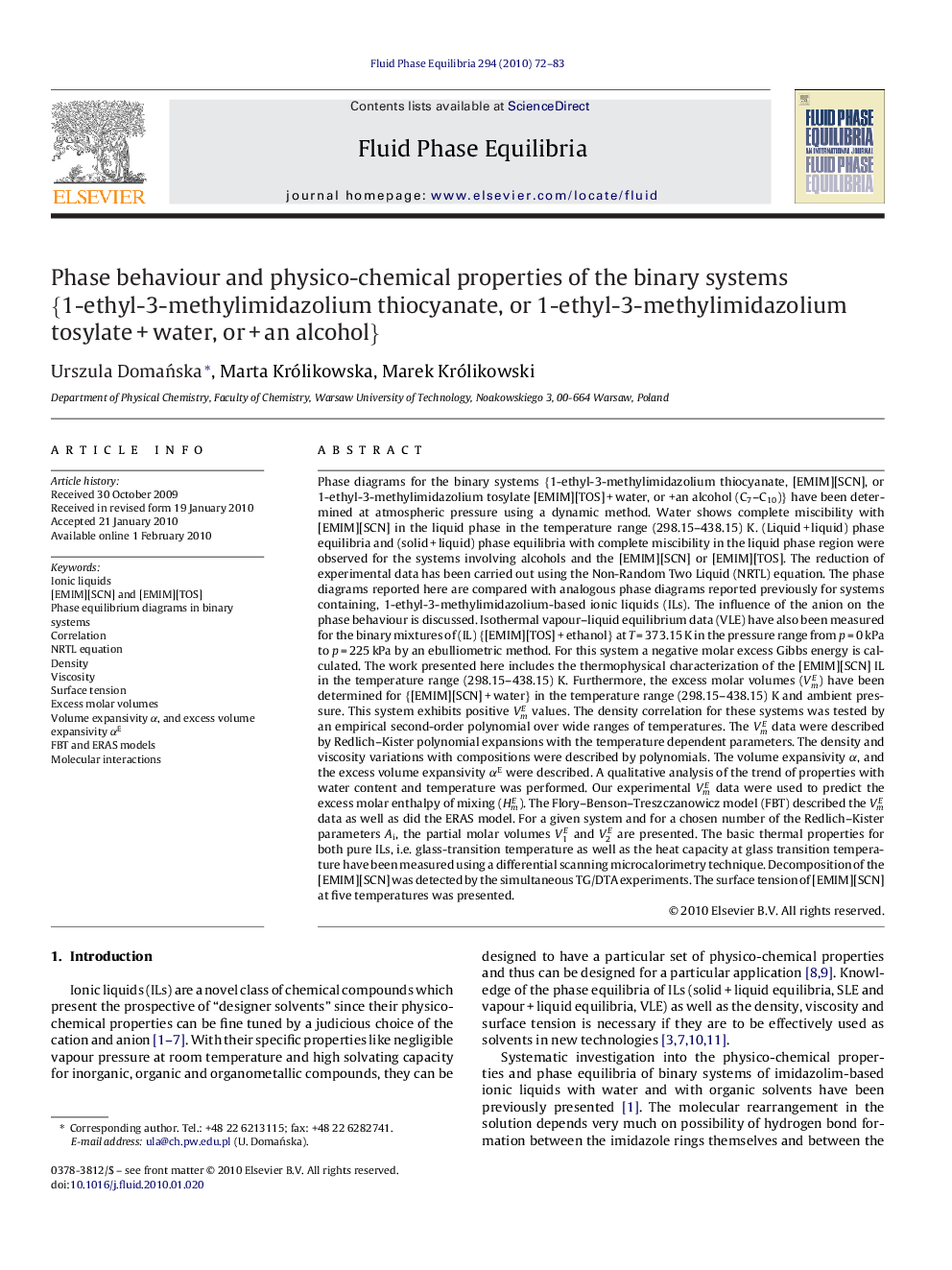| Article ID | Journal | Published Year | Pages | File Type |
|---|---|---|---|---|
| 204584 | Fluid Phase Equilibria | 2010 | 12 Pages |
Phase diagrams for the binary systems {1-ethyl-3-methylimidazolium thiocyanate, [EMIM][SCN], or 1-ethyl-3-methylimidazolium tosylate [EMIM][TOS] + water, or +an alcohol (C7–C10)} have been determined at atmospheric pressure using a dynamic method. Water shows complete miscibility with [EMIM][SCN] in the liquid phase in the temperature range (298.15–438.15) K. (Liquid + liquid) phase equilibria and (solid + liquid) phase equilibria with complete miscibility in the liquid phase region were observed for the systems involving alcohols and the [EMIM][SCN] or [EMIM][TOS]. The reduction of experimental data has been carried out using the Non-Random Two Liquid (NRTL) equation. The phase diagrams reported here are compared with analogous phase diagrams reported previously for systems containing, 1-ethyl-3-methylimidazolium-based ionic liquids (ILs). The influence of the anion on the phase behaviour is discussed. Isothermal vapour–liquid equilibrium data (VLE) have also been measured for the binary mixtures of (IL) {[EMIM][TOS] + ethanol} at T = 373.15 K in the pressure range from p = 0 kPa to p = 225 kPa by an ebulliometric method. For this system a negative molar excess Gibbs energy is calculated. The work presented here includes the thermophysical characterization of the [EMIM][SCN] IL in the temperature range (298.15–438.15) K. Furthermore, the excess molar volumes (VmE) have been determined for {[EMIM][SCN] + water} in the temperature range (298.15–438.15) K and ambient pressure. This system exhibits positive VmE values. The density correlation for these systems was tested by an empirical second-order polynomial over wide ranges of temperatures. The VmE data were described by Redlich–Kister polynomial expansions with the temperature dependent parameters. The density and viscosity variations with compositions were described by polynomials. The volume expansivity α, and the excess volume expansivity αE were described. A qualitative analysis of the trend of properties with water content and temperature was performed. Our experimental VmE data were used to predict the excess molar enthalpy of mixing (HmE). The Flory–Benson–Treszczanowicz model (FBT) described the VmE data as well as did the ERAS model. For a given system and for a chosen number of the Redlich–Kister parameters Ai, the partial molar volumes V1E and V2E are presented. The basic thermal properties for both pure ILs, i.e. glass-transition temperature as well as the heat capacity at glass transition temperature have been measured using a differential scanning microcalorimetry technique. Decomposition of the [EMIM][SCN] was detected by the simultaneous TG/DTA experiments. The surface tension of [EMIM][SCN] at five temperatures was presented.
